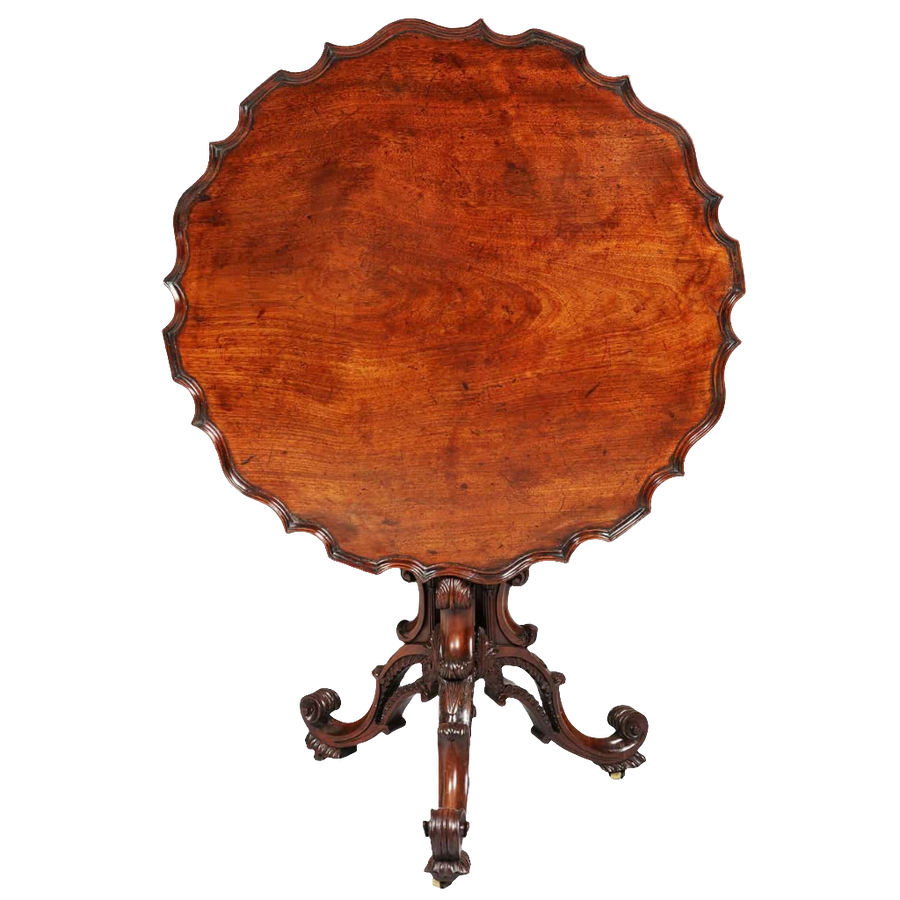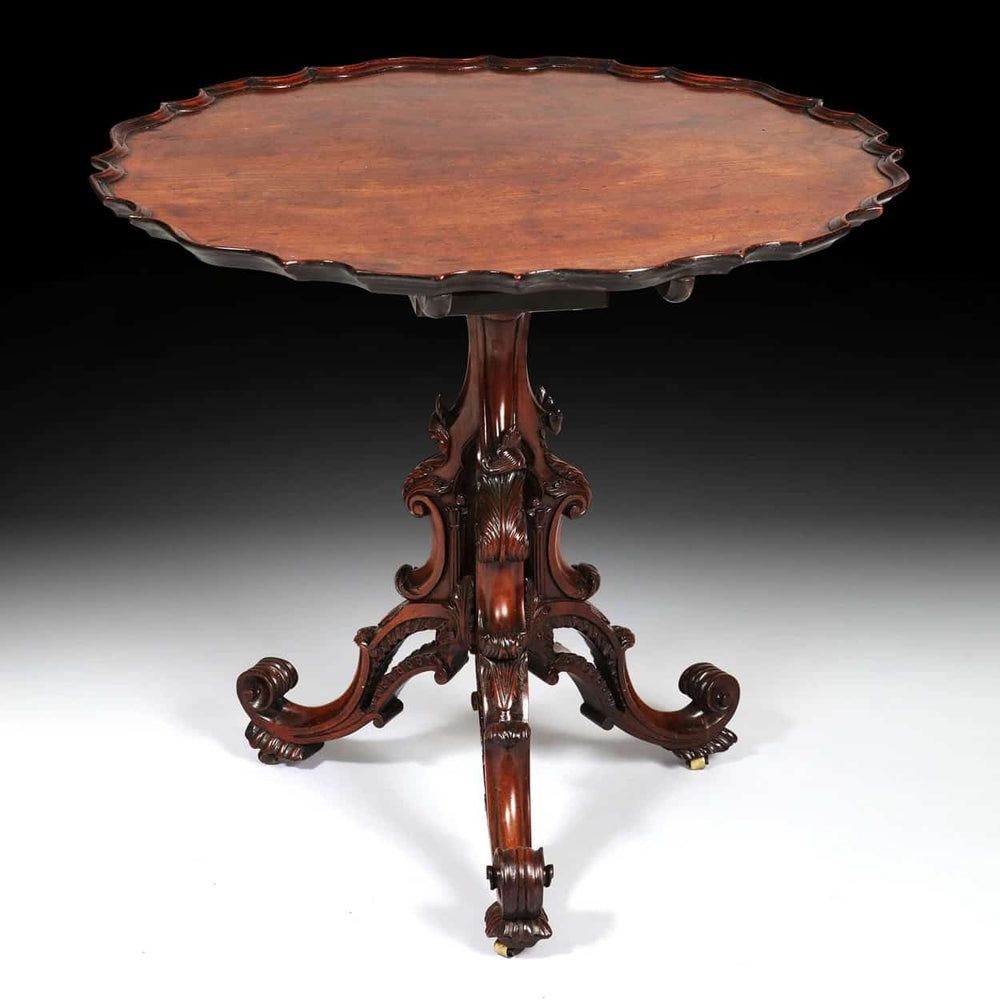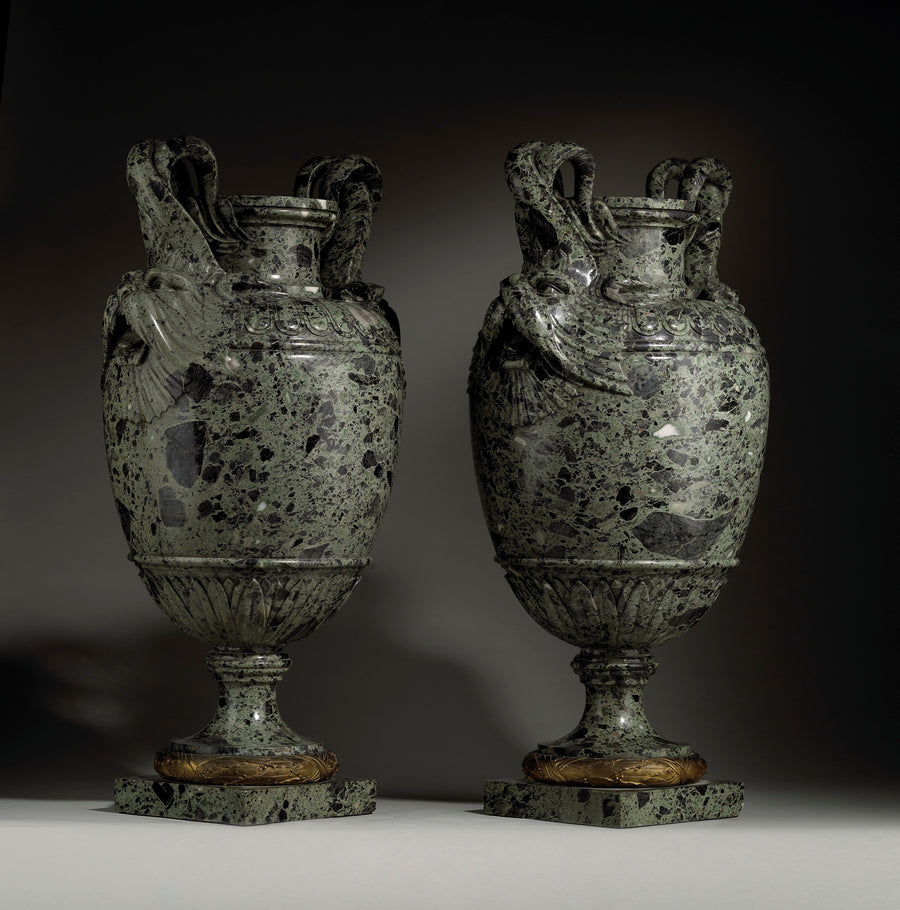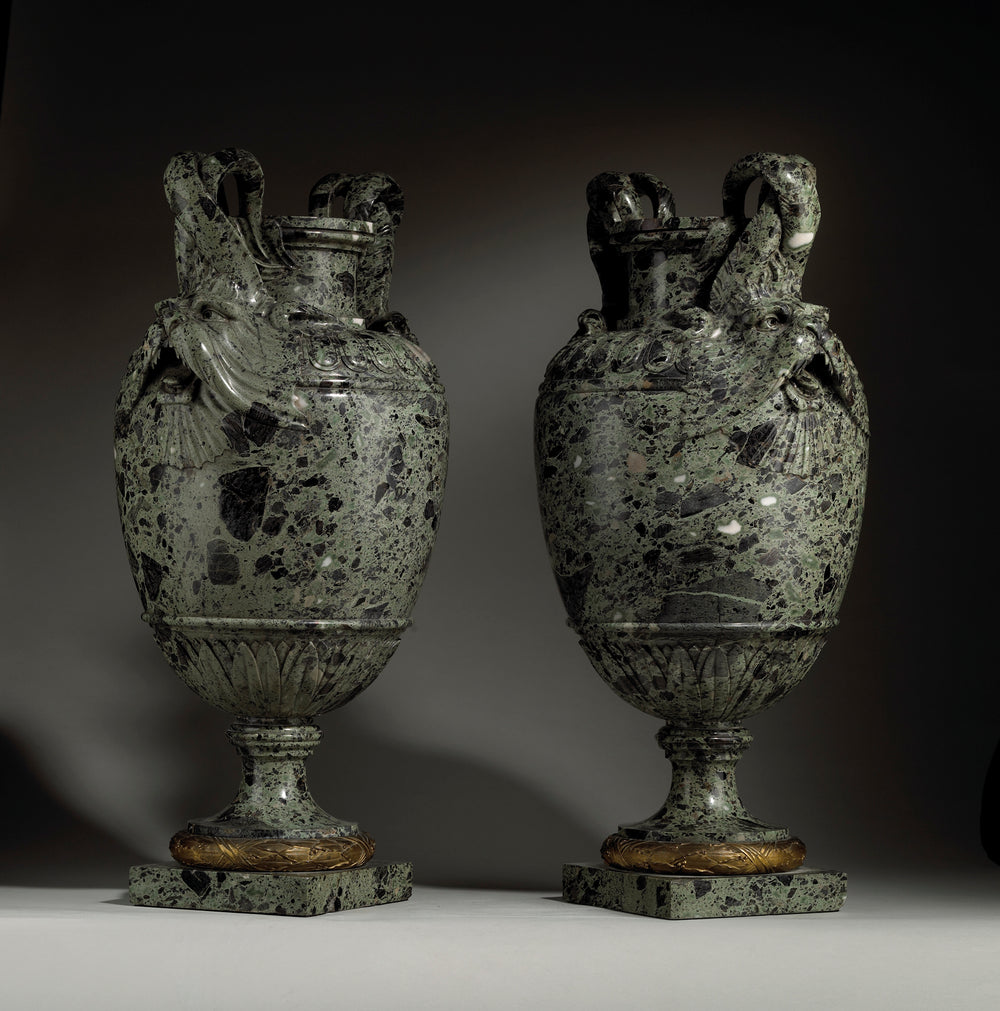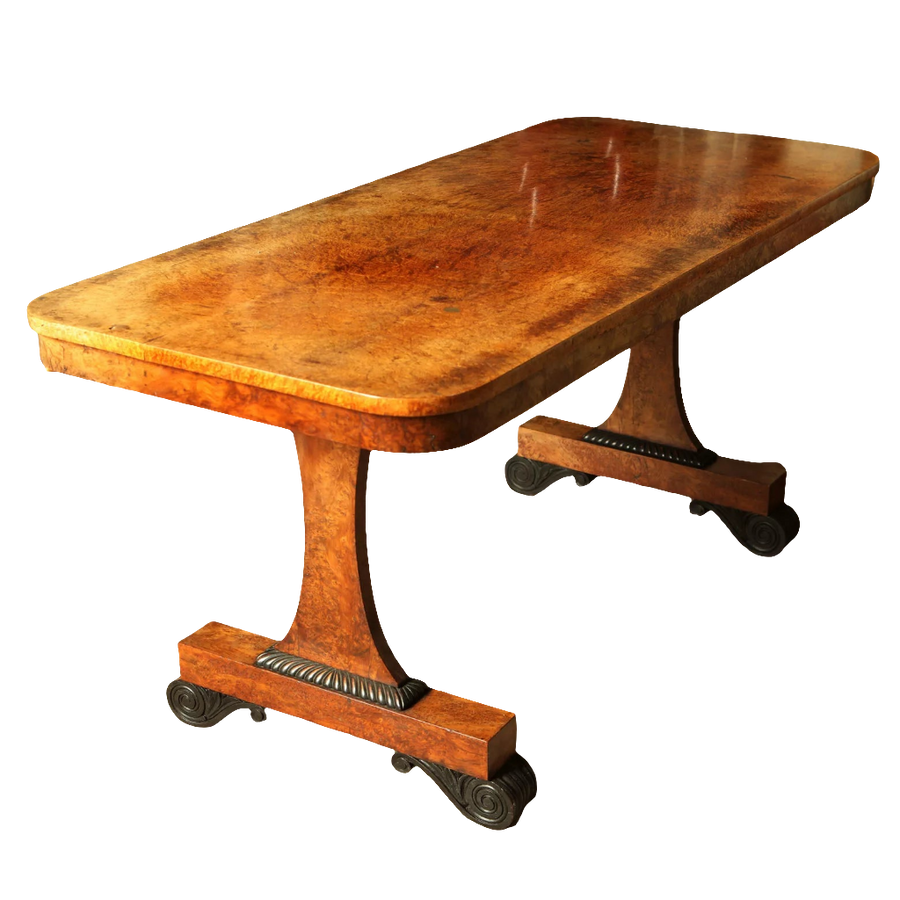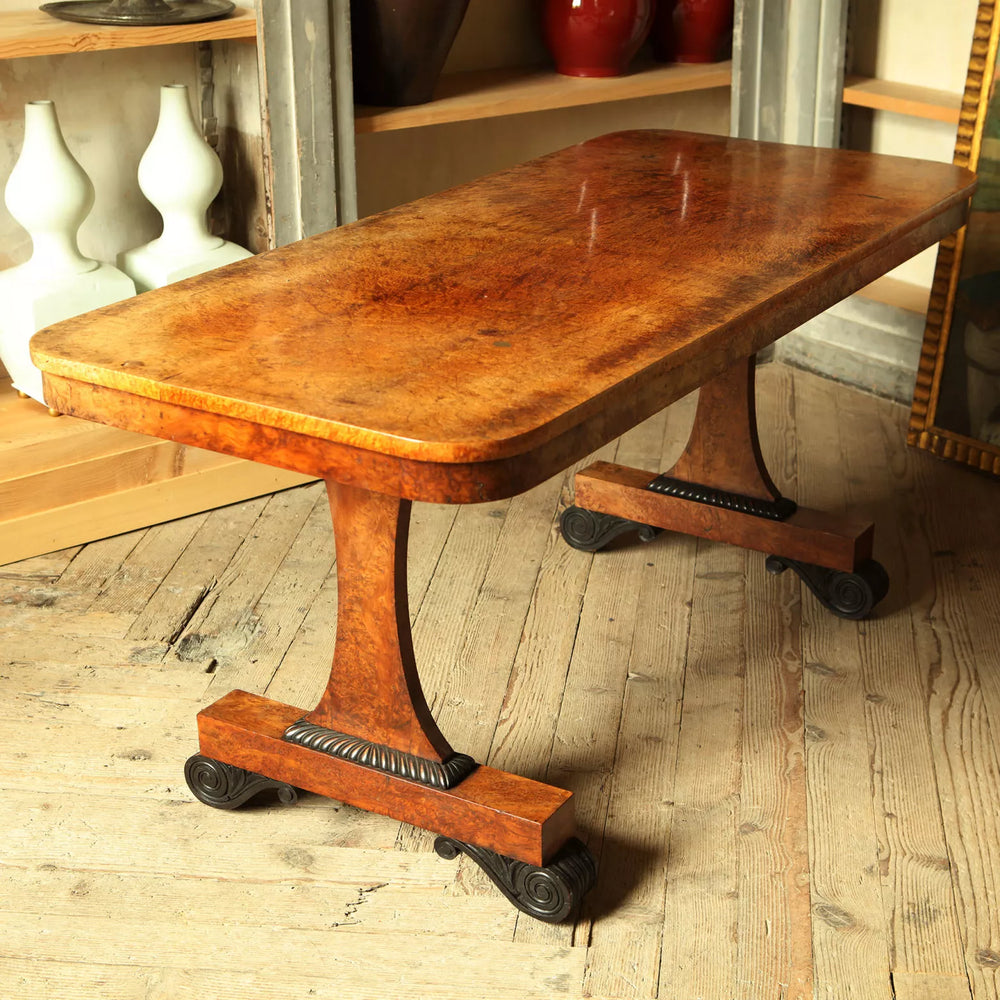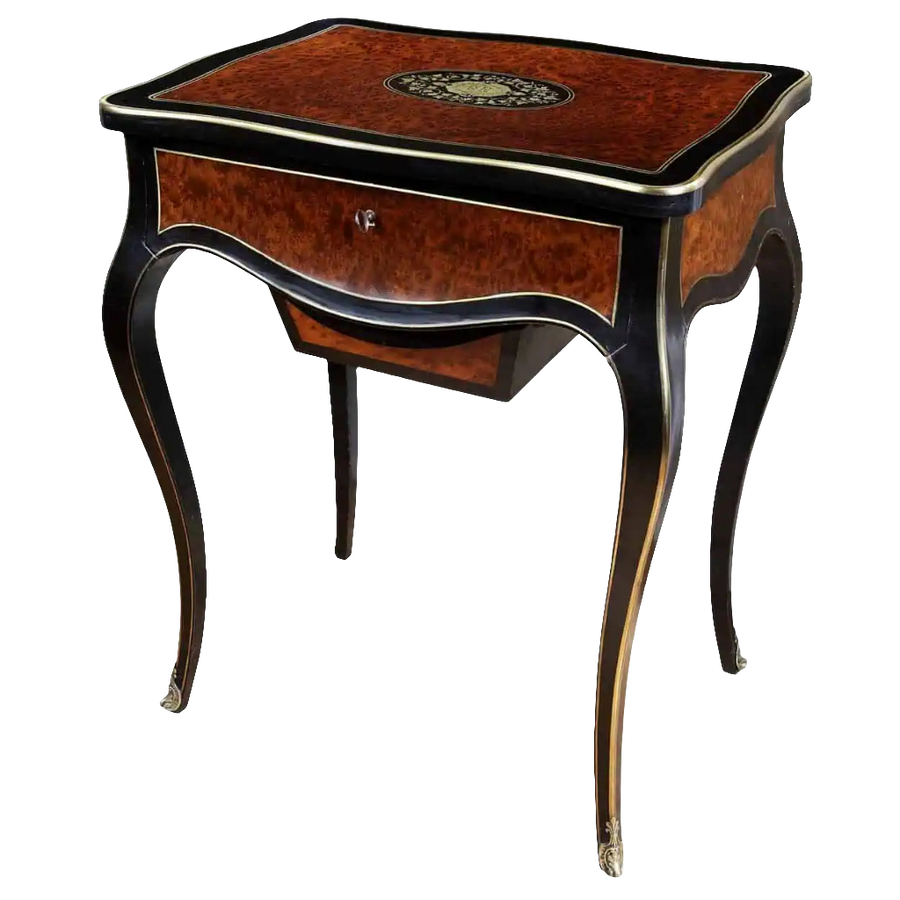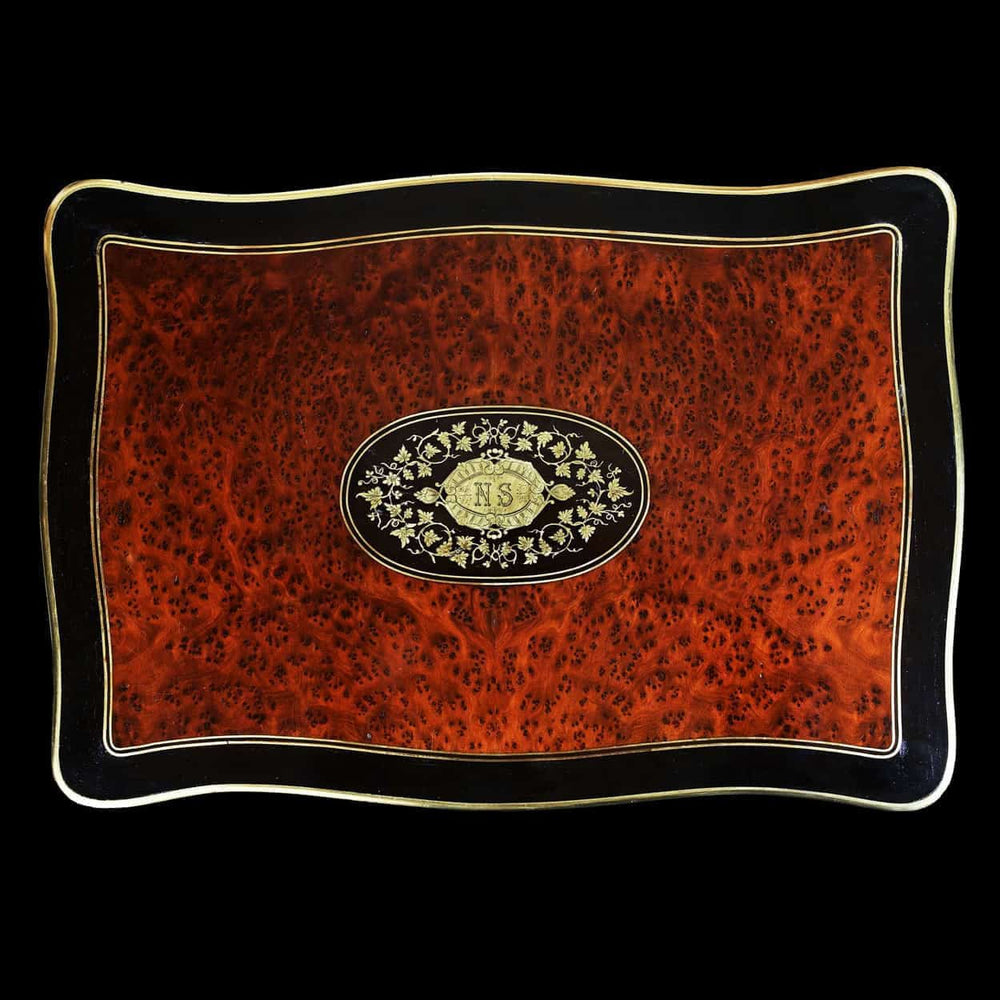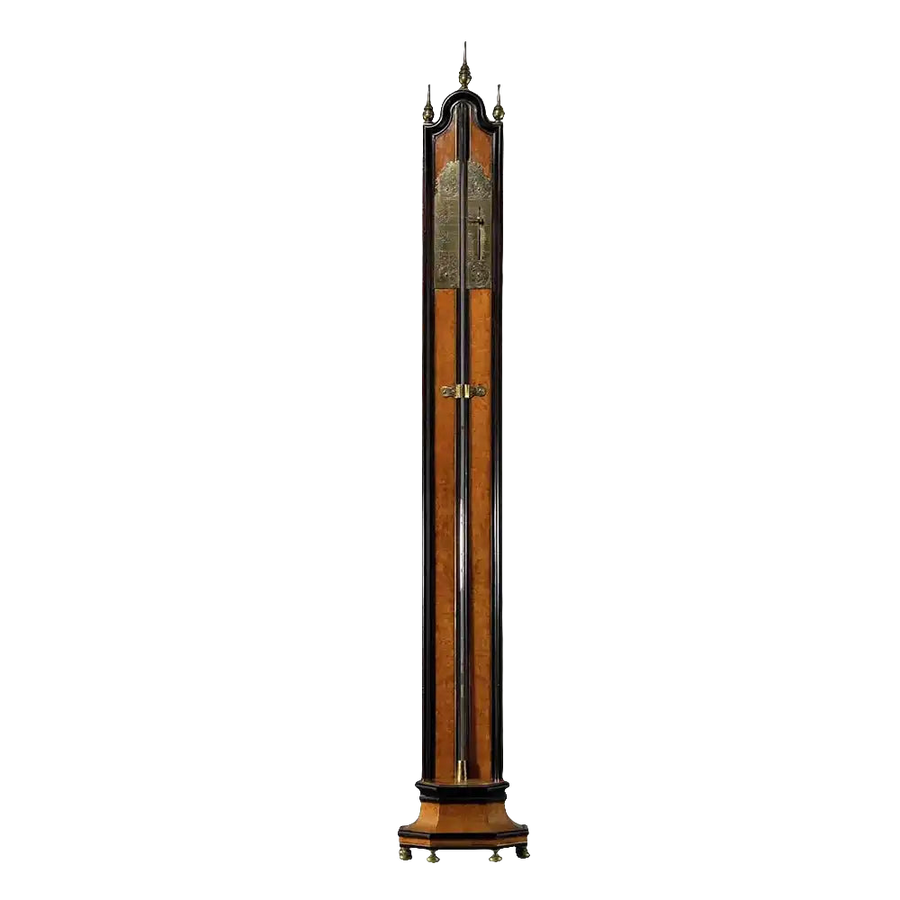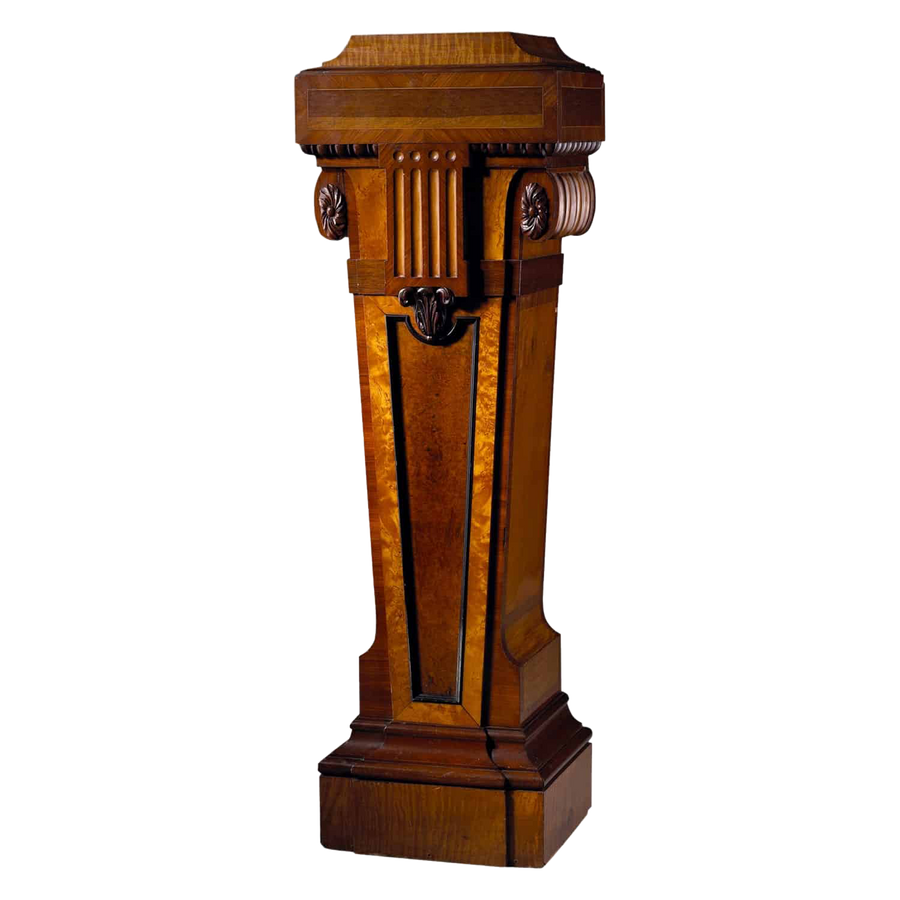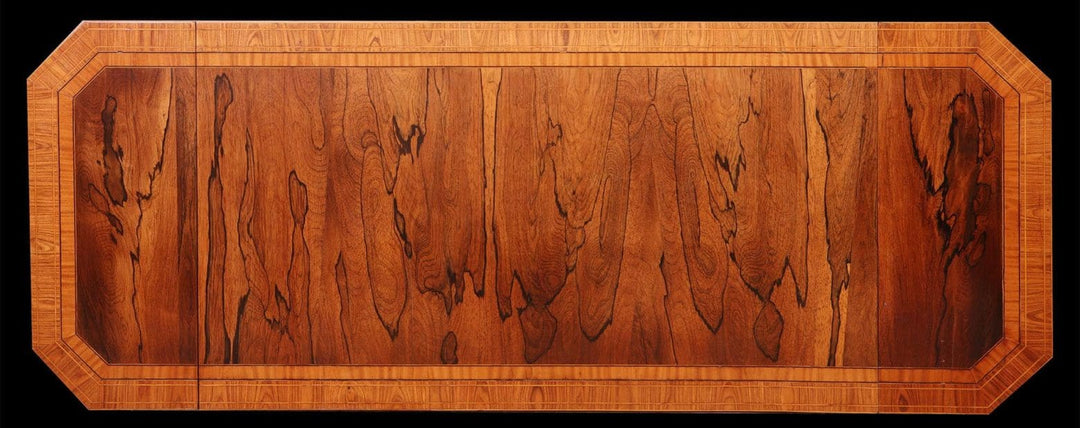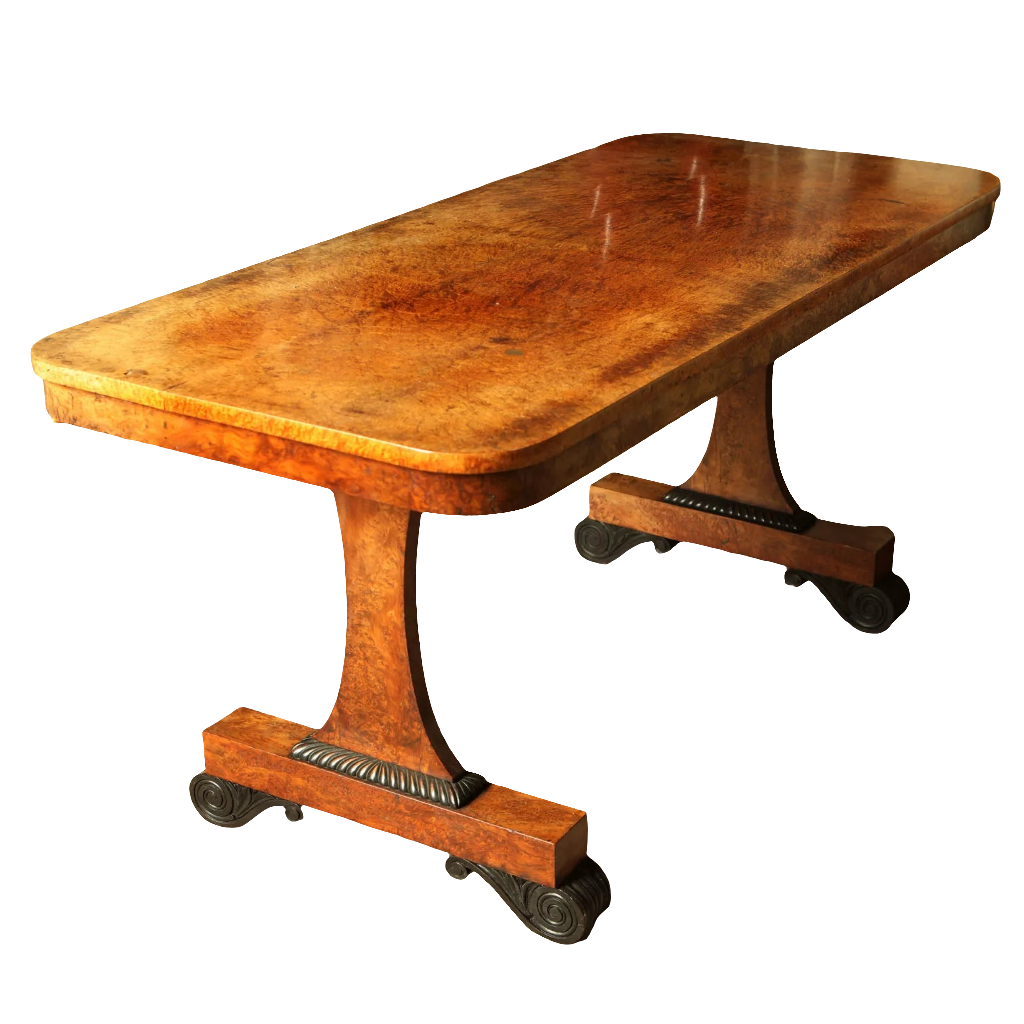
Amboyna Wood
Amboyna (also spelled Ambonese or Ambon) is one of the most highly prized decorative woods in the world. Native to the Moluccas (or Spice Islands) in Indonesia, Amboyna has been admired for centuries for its rarity, beauty, and luxurious appeal.
Characteristics and Beauty
Amboyna is renowned for its deep reddish-brown colouring enriched with swirling, burled grain patterns. These intricate, almost flame-like figures are what make Amboyna so distinctive. When polished, the wood takes on a rich depth and luminosity that was celebrated by European craftsmen from the 17th century onwards.
The 19th-century connoisseur and cabinetmaker Thomas Sheraton described exotic burr woods such as Amboyna as “most pleasing to the eye and richest of embellishments”. Collectors and designers alike prized its unusual figuring, which gave every veneer a unique, almost painterly surface.
Historical Use in Decorative Arts
Amboyna was imported to Europe in the 17th century, arriving alongside the spice trade. Its scarcity and expense ensured that it was reserved for the very finest commissions:
- Seventeenth-century Dutch and English cabinets often featured Amboyna veneers combined with ebony and tortoiseshell.
- During the Louis XIV period in France, Amboyna was used by ébénistes for elaborate marquetry panels.
- In Regency and Biedermeier furniture, Amboyna was a favourite veneer for case furniture, writing tables, and centre tables.
- Luxury objects such as tea caddies, dressing cases, and instrument cases frequently used Amboyna for both interior and exterior decoration.
Collections Featuring Amboyna Furniture
Today, important examples of Amboyna furniture can be found in major collections worldwide, including:
- The Victoria and Albert Museum, London – housing 17th- and 18th-century cabinets veneered in Amboyna.
- The Rijksmuseum, Amsterdam – with Dutch cabinets richly adorned with Amboyna and ebony.
- The Wallace Collection, London – featuring French and English pieces with exotic veneers.
- The Musée du Louvre, Paris – holding examples of Amboyna marquetry from the Louis XIV period.
- The Metropolitan Museum of Art, New York – with 18th- and 19th-century furniture showcasing Amboyna veneers.
Enduring Value
Most often employed as a veneer, Amboyna lends refinement and distinction to other woods. Beyond its aesthetic qualities, it is also prized for its hardness and durability, ensuring that objects made with Amboyna combine enduring strength with exceptional visual impact.
Amboyna continues to be regarded as one of the most prestigious woods in the history of decorative arts, symbolising the intersection of global trade, craftsmanship, and luxury.
FAQs About Amboyna Wood
1. What is Amboyna wood used for?
Historically, Amboyna has been used for fine furniture, decorative boxes, musical instruments, and luxury veneers. Today, it is still valued by high-end craftsmen and collectors for its unique grain and elegance.
2. Why is Amboyna wood rare?
Amboyna is a burl wood from the Narra tree (Pterocarpus indicus). True Amboyna burls are difficult to source and were historically imported in small quantities, making them both rare and costly.
3. How can you recognise Amboyna?
Amboyna is instantly recognisable by its reddish-brown to golden tones and highly figured, swirling burl grain. The depth and movement of its patterns make it distinct from plainer tropical hardwoods.
4. Was Amboyna popular in Georgian and Regency furniture?
Yes. Amboyna was widely used during the late Georgian, Regency and Biedermeier periods, often in combination with ebony or gilt mounts, giving pieces an opulent and exotic appeal.
5. Which museums hold Amboyna furniture?
Examples can be found at the Victoria and Albert Museum, the Rijksmuseum, the Wallace Collection, the Louvre, and the Metropolitan Museum of Art.




